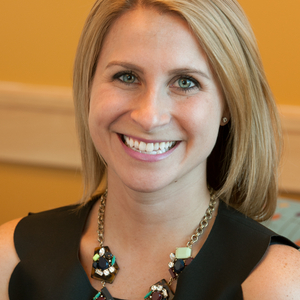OCD and Eating Disorders: The Connection Between OCD and Food
Author:
Kyle Hardner
Clinically reviewed by:
Ellen Brandenburg, LCSW-C
Kathryn Johnson, MA, RD/LD, CEDRD-C
Adee Levinstein, MS, RD, LD, CEDS-C
What does it look like when obsessive-compulsive disorder (OCD) and an eating disorder overlap?
OCD
Someone with OCD typically has unwanted thoughts or feelings (obsessions), then might develop rituals (compulsions) that offer temporary relief from these thoughts and feelings.
However, these rituals often become unmanageable, severely impacting their daily lives. Those same rituals can start to impact their food choices, leading to disordered eating and eating disorders.
Eating disorders
The other way around, someone with an eating disorder typically has lots of food rules and anxiety related to food choices.
They may start to develop rituals outside of food that bring them temporary comfort, like checking that the stove is turned off or flipping the light switch on and off repeatedly before leaving a room.
In this piece, we explore the relationship between OCD and eating disorders, where they overlap, how to untangle the symptoms and where to find help.

OCD and eating disorders statistics
Research shows that up to 94% of people with eating disorders also have co-occurring mental health conditions, which can include mood and anxiety disorders or OCD.
One study [1] revealed that up to 41% of individuals with anorexia and/or bulimia, common eating disorders, were also diagnosed with OCD.
In addition, a retrospective review of several studies [2] indicated that 18% of all people with an eating disorder will develop OCD in their lifetime versus 2.3% of the general population.
Why does such a strong connection exist between OCD and eating disorders?
“With both OCD and eating disorders, we see the obsessive nature of thoughts and constant rumination that create rules and compensatory behaviors,” says Kathryn Johnson, MA, RD/LD, CEDRD-C, nutrition director at Eating Recovery Center (ERC).
“These behaviors may seem illogical, but to the person experiencing them, they are very real.”
For example, individuals with OCD may insist on eating foods in a certain order, or they may eat only foods with certain ingredients or textures.
These types of behaviors can trigger or intensify an eating disorder.
“Many individuals with OCD and eating disorders also carry a tremendous amount of guilt and shame,” Johnson elaborates.
OCD, ARFID, anorexia and more
While the link between OCD and eating disorders like bulimia and anorexia is proven, the relationship between OCD and other eating disorders is still developing.
OCD and ARFID
Avoidant/restrictive food intake disorder (ARFID) occurs when an individual avoids eating specific foods, restricts their food intake or avoids eating altogether.
Many symptoms related to OCD may manifest in individuals with ARFID, including:
- Avoiding certain foods due to negative perceptions of what might happen if they are eaten
- Eating only sealed, prepackaged items
- Eating only foods that the individual has prepared themselves
- Avoiding social events because “safe” foods aren’t readily available
OCD and orthorexia
Orthorexia is a pattern of disordered eating that involves an obsession with eating only foods perceived to be "clean" or "healthy."
“As is common with OCD, when these types of obsessive thoughts are present, compulsive behaviors are present too, in order to manage the obsessions,” explains clinical social worker Ellen Brandenburg, LCSW-C, primary therapist at Pathlight Mood & Anxiety Center (Pathlight).
These behaviors may include:
- Eating only certain types of ingredients in a perceived health-oriented way
- Spending hours at multiple grocery stores seeking the “right” brands and ingredients
- Spending hours planning out and preparing food for consumption
Learn more about orthorexia here.

OCD and eating disorders: Where do symptoms overlap?
Individuals with OCD and disordered eating will share several commonalities, regardless of the specific type of eating disorder.
“These individuals will often have strict rules about what they can and cannot do with food,” Johnson says.
“Addressing these behaviors with logic alone won’t be enough because these fears and behaviors aren’t necessarily logical.
This can be very challenging for a person’s support system, because they know that the individual won’t gain X amount of weight overnight if they eat a slice of cake, just like they know a person’s mother won’t be harmed if they don’t check the locks three times.”
Unfortunate side effects of co-occurring OCD and eating disorders include difficulty performing daily tasks, like school and work, along with an increasingly smaller social circle.
An individual with orthorexia and OCD, for example, will have difficulty enjoying a toppings-heavy hot dog with their friends at a baseball game due to their worries that it’s not “quality” food.
“All of these scenarios impact an individual’s overall mental and emotional wellness, because they need to devote a great deal of time, effort and resources to eating in a specific way so they can satisfy the obsessional thought patterns and ease the accompanying anxiety,” Brandenburg says.
How to untangle OCD compulsions and eating disorder behaviors
Because so much overlap in symptoms exists, it can be extremely difficult to know where an individual’s OCD compulsions and eating disorder behaviors begin and end.
“These behaviors are often indistinguishable without some processing and exploration,” says Adee Levinstein, MS, RD, LD, CEDS-C, clinical dietitian training specialist with ERC Pathlight.
Levinstein also notes the importance of waiting to assess for OCD if a person is malnourished. Why? A malnourished brain has tendencies that can present like OCD symptoms but resolve with proper nutrition.
So, once someone is properly nourished, start by asking questions related to the nature of the symptoms.
“To meet the criteria for OCD, an individual would need to have obsessions and compulsions not related to body weight, shape or size,” Johnson says. "These may include only walking on certain blocks or touching every doorknob they walk past.”
Other symptoms, Johnson explains, can be part of both diagnoses. These can include obsessively counting calories or washing hands for fear of potentially “contaminating” the food you eat. In these instances, finding the underlying reasons for the behaviors may unlock some clues.
“Take the instance of an individual who has a hard time eating food outside the home,” Johnson says. “That person may be fearful of eating certain foods, but their primary concern isn’t that they’ll gain weight—which could be a sign of an eating disorder—but that they will become very sick—which could be the sign of OCD.”
How to know for sure? “I recommend requesting a screening for OCD, because OCD can be underdiagnosed and may complicate eating disorder recovery,” Brandenburg says.

Where to find help for OCD and eating disorders
“First and foremost, it’s important to know that co-occurring OCD and eating disorders can be treated, and symptoms can improve,” Levinstein says.
The key, she says, is to find a multidisciplinary team that can help people with co-occurring conditions find their individual path to lasting recovery.
At ERC Pathlight, treatment begins with a conversation.
“We’ll learn more about the drivers of a person’s obsessions and thought patterns so we can tailor treatment in a structured, comprehensive way,” Brandenburg says.
If a person’s eating disorder behaviors are impacting their overall physical health, they will likely receive treatment at Eating Recovery Center. Learn more about our nutritional approach to eating disorder treatment here.
If their disordered behaviors are more secondary or strongly driven by their OCD diagnosis, then Pathlight Mood & Anxiety Center programming may be a better fit.
What does OCD and eating disorder treatment look like?
During OCD and eating disorder treatment at ERC Pathlight, individuals will undergo exposure therapy, which reduce the anxieties associated with specific obsessions and compulsions. And a multidisciplinary approach is key.
“Our team – psychiatrist, therapist and registered dietitian – meet constantly to support individuals in learning and practicing coping skills safely,” Johnson says.
“From a nutritional standpoint, we work to interrupt disordered eating patterns and normalize an individual’s eating patterns,” Levinstein adds. “This supports the effectiveness of any therapeutic and medicinal interventions.”

Families play a vital role in recovery
Conditions like OCD and eating disorders impact the entire family, which is why we give families the education, tools and support they need when they need it.
“For treatment to succeed, everyone will need to push back and set limits,” Johnson says. “It can be challenging at times, but your support will help your loved one feel comfortable as they navigate new triggers and exposures after treatment.”
Learn how to get matched with the exact support you need.
Read these next:
Sources
- Kaye, W.H., Bulik, C.M., Thornton, L., Barbarich, N., & Masters, K. (2004). Comorbidity of anxiety disorders with anorexia and bulimia nervosa. American Journal of Psychiatry, 161(12), 2215-2221. doi: 10.1176/appi.ajp.161.12.2215.
- Mandelli, L., Draghetti, S., Albert, U., De Ronchi, D., & Atti, A.R. (2020). Rates of comorbid obsessive-compulsive disorder in eating disorders: A meta-analysis of the literature. Journal of Affective Disorders, 277, 927-939. doi: 10.1016/j.jad.2020.09.003.
Struggling with an eating disorder?
One conversation can make all the difference. Connect with us today.
Get Help NowConnect With Us
Written by
Written by
Written by
Kathryn Johnson, MA, RD/LD, CEDRD-C
Written by
Adee Levinstein, MS, RD, LD, CEDS-C




